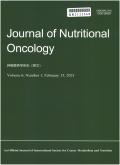Investigating Factors Influencing the Stability of Enteral Nutritional Emulsions Designed for Cancer Patients
引用次数: 1
Abstract
Abstract: Objective A commercially available reference product was “re-engineered” and the target emulsion was formulated to contain the same energy density, as well as the same percentage of energy sources, as the reference product. The particle size and distribution, polydispersity index (PDI), and zeta-potential of emulsions were measured as indices to analyse the quality of the emulsions. Methods The centrifugal stability (Ke) was examined as the main measure of the stability of the target emulsion. Critical parameters affecting the stability of emulsions were also determined, while the temperature was fixed at 30°C, shear speed at 3500 r/min, and shear time was 15 min. The optimal quantity of emulsifier was also studied in the crude homogenate. Results A relatively stable emulsion could be obtained by using PC-50 at a dosage of 2% as the emulsifier. A 2: 1 proportion of whey protein to casein, a 1: 1 proportion of maltodextrin (DE 10-15) to maltodextrin (DE 15-20) and medium chain triglyceride (MCT) in powder form were used to obtain the most desirable emulsion. Conclusion This study explored the critical parameters that influence the stability of a total nutrition enteral emulsion designed for cancer patients, providing useful information for further industrialisation of this and other emulsion products.癌症患者肠溶营养乳稳定性影响因素的研究
摘要:目的对一种市售的参考产品进行“重新设计”,并配制出与参考产品具有相同能量密度和相同能量来源百分比的目标乳液。测量乳液的粒度和分布、多分散指数(PDI)和ζ电位作为分析乳液质量的指标。方法以离心稳定性(Ke)为主要指标测定目标乳剂的稳定性。当温度固定在30°C,剪切速度为3500r/min,剪切时间为15min时,还确定了影响乳液稳定性的关键参数。还研究了粗匀浆中乳化剂的最佳用量。结果以PC-50为乳化剂,用量为2%,可得到相对稳定的乳液。使用乳清蛋白与酪蛋白的2∶1比例、麦芽糊精(DE 10-15)与麦芽糊精(DE15-20)的1∶1比例以及粉末形式的中链甘油三酯(MCT)来获得最理想的乳液。结论本研究探讨了影响癌症患者全营养肠内乳液稳定性的关键参数,为该乳液和其他乳液产品的进一步工业化提供了有用的信息。
本文章由计算机程序翻译,如有差异,请以英文原文为准。
求助全文
约1分钟内获得全文
求助全文

 求助内容:
求助内容: 应助结果提醒方式:
应助结果提醒方式:


